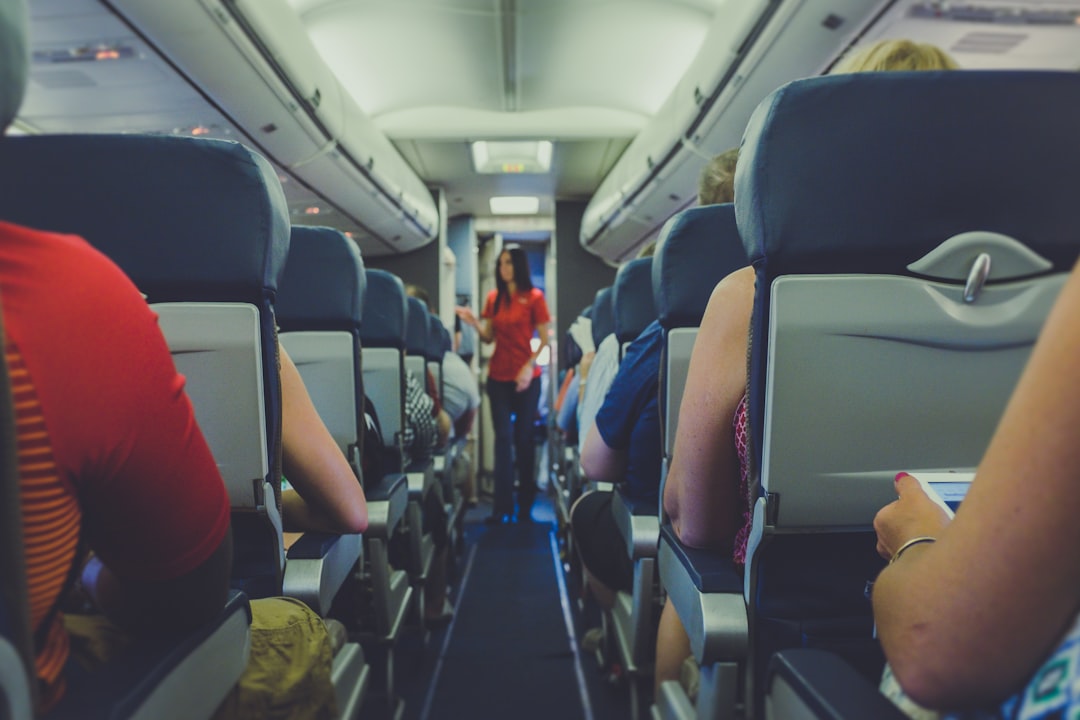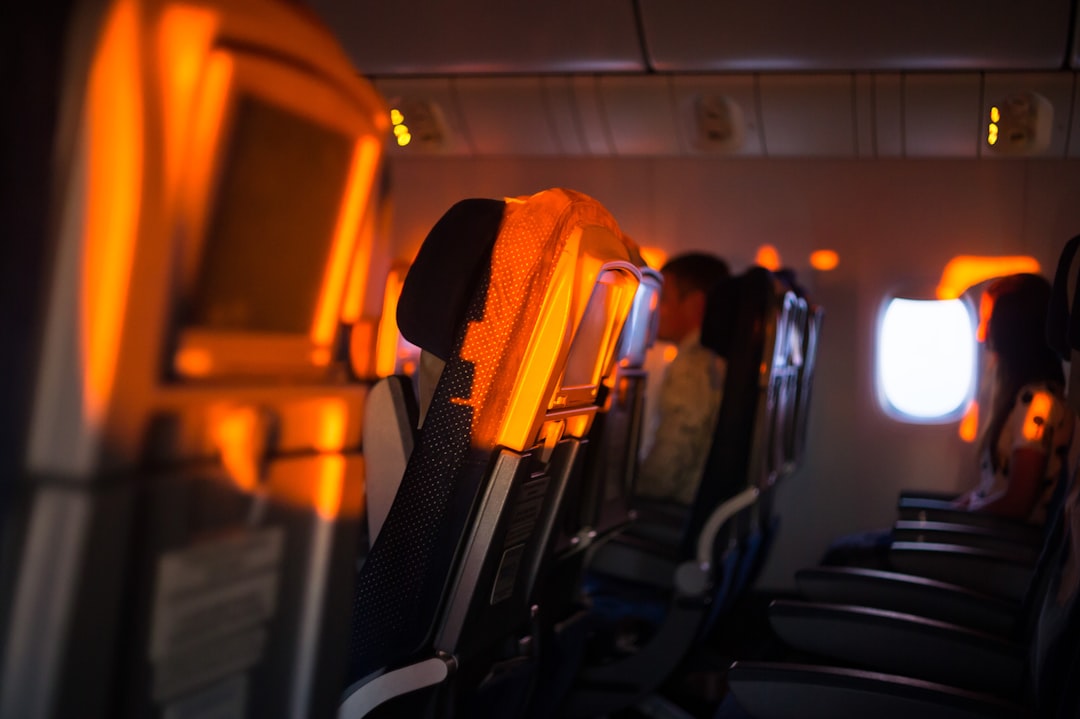Flying High: How to Pick the Safest Seats on Airplanes
Flying High: How to Pick the Safest Seats on Airplanes - Choose Seats Near the Exits

When it comes to picking the safest seats on an airplane, most experts agree that you should aim to sit near an exit row whenever possible. While no seat is 100% safe in the unlikely event of an emergency, exit rows do provide some key advantages that could literally save your life one day.
First and foremost, seats near the exits give you quick and easy access to get off the plane. According to aviation safety experts, exit rows are the fastest way out in an evacuation. Sitting in these rows cuts down on the distance you'd have to travel to make it to the exit door. With just a few feet between you and the door, you avoid getting stuck behind a bottleneck of passengers all scrambling over each other to get out.
Another major reason to grab an exit row seat is that these areas tend to withstand impact better than other parts of the cabin. The extra space near exits and reinforced floor panels help absorb crash forces, giving you a better shot at surviving catastrophic accidents.
Don't let the word "exit" fool you - studies show the overwing exits rarely open in emergencies, so focus on doors at the front and back of the plane. Aim for the first row behind exits, as bulkier exit doors can break loose and block the immediate row.
While able-bodied passengers get first dibs on these coveted seats, don't be shy about asking to switch if your original seat seems unsafe. Flight attendants want you to feel comfortable, so politely request a swap once boarding is finished.
Exit rows do come with a few caveats. These seats don't recline and sometimes have no windows - not ideal for nervous fliers who rely on horizons to quell queasy stomachs. There's also the responsibility factor - those sitting near exits must be mentally and physically capable of operating doors in an emergency.
Despite the downsides, experts overwhelmingly recommend window exit rows for a few key reasons. You avoid being bumped in the aisle, gain access to fresh air vents to counteract motion sickness, and can rest your head or look outside if needed.
What else is in this post?
- Flying High: How to Pick the Safest Seats on Airplanes - Choose Seats Near the Exits
- Flying High: How to Pick the Safest Seats on Airplanes - Avoid Sitting in the Tail Section
- Flying High: How to Pick the Safest Seats on Airplanes - Stay Clear of the Overwing Area
- Flying High: How to Pick the Safest Seats on Airplanes - Research Airlines' Safety Records
- Flying High: How to Pick the Safest Seats on Airplanes - Consider How Full the Flight Is
Flying High: How to Pick the Safest Seats on Airplanes - Avoid Sitting in the Tail Section

When deciding where to sit on a plane, most passengers aim for the front or exit rows. But seasoned flyers know that the back of the plane should also be avoided, especially the last few rows. While the tail section does have some advantages like quicker disembarking, there are critical safety reasons to stay clear of this area whenever possible.
According to decades of crash data analysis, the rear of aircrafts consistently see the highest fatality rates in accidents. During crashes, the tail section is most vulnerable to separation from the rest of the fuselage. In fact, NTSB studies show the fatality risk more than triples for passengers in the last few rows. Sitting near the plane's engines also exposes you to volatile explosions and fires.
In the case of sudden stops or runway overruns, the tail end usually decelerates slower, subjecting passengers to intense whiplash forces. Even minor incidents like hard landings or turbulence concentrate more g-forces towards the back. When seats shake violently, passengers can suffer serious neck and back injuries.
Aerospace engineers point to physics to explain why the tail bears the brunt of impact. When a plane collides nose-first, the abrupt deceleration ripples backward through the aircraft. This transfers more energy towards the lighter, flexible rear fuselage. The tail's unique tapered shape also plays a role, as the thinner walls crumble without spreading crash forces evenly.
Clearly, you'll boost your odds of walking away unharmed by avoiding the last 6-10 rows. However, don't assume the mid-cabin is inherently safer. Center seats located over or forward of wings are considered the impact zone, as wings contain fuel tanks that can rupture on impact. For optimal protection, stick to forward rows without being right behind bulkier exit doors that can break loose.
And don't believe the myth that seats in the back feel less turbulence. In reality, the smoothest ride is near wings and forward cabins. The tail end's lighter weight allows it to be whipped around harder by rough air. Sitting closer to the plane's center of gravity provides a steadier, more stable sensation in flight.
Flying High: How to Pick the Safest Seats on Airplanes - Stay Clear of the Overwing Area

While window seats are generally considered the safest on a plane, you'll want to stay clear of the overwing area. This zone that aligns with the wings may seem innocuous, but it's actually one of the most dangerous regions in a crash.
According to extensive aviation research, the space directly over or in front of the wings sees some of the highest fatality rates. This is because the wings contain fuel tanks that can rupture and explode on impact. Sitting right next to these ticking time bombs puts you at risk of perishing in the resulting inferno.
NASA led the charge on collecting data about overwing dangers. They performed a detailed analysis of all plane crashes over a 17 year period and found around 40% of passengers in the overwing area died. That's compared to around 20% in the front cabin. Clearly, the numbers point to this zone being a death trap in catastrophic accidents.
Another report by Popular Mechanics crunched the numbers from the NTSB and found fatality rates to be over 3X higher in overwing seats. Their experts attribute it to wings taking the brunt of crash forces and the explosion risk from punctured fuel tanks. Even if the wings remain intact, they often obstruct overwing exits and trap passengers.
Real world accidents reinforce just how vulnerable the overwing area is. A chilling example is United Flight 232, which crash landed in 1989. That plane exploded into a massive fireball, incinerating many passengers seated around the wings. Only a small number of survivors were from overwing rows, with most near the tail or cockpit.
Of course, crash landings with explosions and fires are rare. But even in minor mishaps, the physics of wings make the overwing zone rougher. Acting like a lever arm, wings multiply and concentrate turbulence forces. So while window seats usually provide the smoothest ride, that all changes near the wings.
First-hand accounts from frequent flyers describe getting bumped around far more in overwing rows. Flight attendants also warn passengers these seats will feel rougher compared to others on the plane during regular flights. So if you're prone to motion sickness, definitely don't pick seats in this area.
To stay safe, use online seat maps when booking to identify which rows align with the wings. Generally, you'll want to avoid any seats between the leading and trailing edges. However, don't just blindly pick non-overwing aisles either. Remember, aisles provide easy egress but are directly exposed to carts and other passengers in accidents.
Flying High: How to Pick the Safest Seats on Airplanes - Research Airlines' Safety Records

Cutting corners on maintenance is one surefire way for airlines to dig their own graves. When profit motives lead to planes falling apart at the seams, disaster strikes. That's why researching an airline's safety record is such a critical part of trip planning. Your life could quite literally depend on it.
Between dodgy airlines filing for bankruptcy and others getting slapped with fines or restrictions over shoddy maintenance practices, red flags abound in this industry. Even major US carriers aren't immune. Don't forget, American Airlines had to ground 48 jets in 2019 thanks to mechanics flagging deferred maintenance issues.
So how can passengers see past glossy ads and pompous slogans promising amazing journeys to gauge actual safety? It starts by consulting objective, third-party reports for the cold hard facts. Organizations like AirlineRatings annually release rankings that score airlines based on crash histories, incident data, operational metrics, and audit results. These empirical studies distill reams of data into letter grades or 1-7 star ratings so travelers can compare at a glance.
IATA's Operational Safety Audit (IOSA) is another reputable certification to check for. Monitoring over 400 parameters, it audits things like maintenance controls, ground handling, flight operations and crew training. Airlines on Europe's banned list also raise red flags. The UK CAA and Germany's Federal Office of Civil Aviation independently assess risks. Being banned signals lax safety standards.
For deeper insights, the JACDEC Aviation Safety Index incorporates expert analysis of factors like fleet age, cockpit automation and regulatory rigor. The higher the score, the greater the risk. JACDEC rightly flagged warning signs at Lion Air years before the 2018 crash exposing its unsafe culture.
While past performance doesn't guarantee future results, scoring well on these ranked lists does imply safety management is a priority. It shows ethical, Preventative maintenance programs aimed at problems before they occur. After all, an ounce of prevention is worth a pound of cure in aviation.
Flying High: How to Pick the Safest Seats on Airplanes - Consider How Full the Flight Is
When booking a flight, most passengers obsess over snagging the lowest fare or scoring the perfect seat. But there's another important factor that gets overlooked far too often - how full the plane will be. While a cheap ticket may be tempting, jam-packing aboard a 100% full flight could literally be putting your life at risk.
Aviation experts agree that flight load factors directly correlate to passenger fatality rates in accidents. According to exhaustive data analysis by USA Today and the AP, death rates are much higher on full flights compared to ones with empty seats. They studied every crash worldwide between 1971-1998 involving Western-built jets and found the survival rate was a shocking 69% higher on planes below half capacity.
With more empty seats, passengers have room to move out of harm's way and avoid blocking each other. University of Greenwich Professor Ed Galea, who wrote the aircraft evacuation regulations, confirms a worst-case scenario of getting trapped can happen more easily when every seat is taken. His research shows evacuation slides only operate around 40% capacity even in optimal conditions. So don't expect to quickly slip down a slide from a packed plane after a crash.
SeatGuru's Founder Tom Romoser weighed in that a higher load factor virtually guarantees larger passenger size. Those who encroach on your space won't give your body the buffer zone it needs. His advice? "Book the emptiest flight on the emptiest plane you can find."
Of course, you may have limited control over how full your flight is when redeeming points or miles for an award ticket. But when booking paid fares, always cross-reference the historical load factor for your intended flight against other options. Sites like Flightradar24 track this data so you can easily see patterns and choose less crowded departures.
